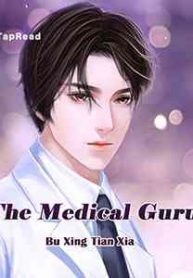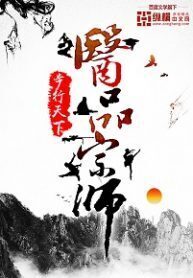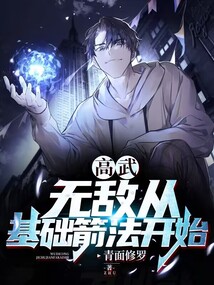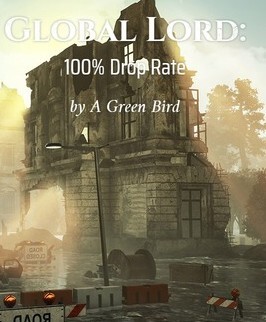Chapter 460: seek investment
ASML, as the lithography machine manufacturer with the highest market share in the world, was formerly the lithography equipment R&D department of the Dutch electronics giant Philips.
In 1973, a new type of lithography equipment (the prototype of PAS2000) was successfully developed, and it achieved certain success in overall performance research and development. However, due to the high cost and a series of technical problems, it was not finally launched.
At the same time, Philips once planned to shut down the lithography equipment R&D department because other equipment manufacturers made breakthroughs in solving the defects of contact lithography machines with different technical paths.
However, then another semiconductor equipment manufacturer ASMI hoped to cooperate with Philips to develop and produce lithography machines, so in 1984, the two parties invested about 2.1 million US dollars to establish ASML.
In the lithography machine market at that time, ASML was just a nobody.
At that time, the market was mainly occupied by GCA in the United States and Nikon in Japan, each of which occupied about 30% of the market, Ultratech accounted for about 10%, and the rest of the market was divided up by Eaton, PE, Canon, Hitachi and other manufacturers, but they share of less than 5%.
Around 1990, ASML launched the PAS5500 series lithography machine, an 8-inch lithography machine with an advanced design, which adopts a modular design lithography system and can produce multiple generations of advanced ICs on the same platform.
PAS5500 not only brings key customers such as TSMC, Samsung and Hyundai to ASML, but also continues to be recognized by customers with the advantages of PAS5500, and also brings ASML a continuous increase in market share and substantial profits. By 1994, ASML's market share in the global lithography machine market had risen to 18%.
The turning point of everything started with the success of ASML in immersion lithography technology, which made it beat Nikon and other head lithography machine manufacturers in one fell swoop and become the leader in the global lithography machine market.
Before 2000, dry lithography technology was used in lithography equipment. Until 2002, Dr. Lin Benjian, then vice president of TSMC R&D, proposed the idea of immersion lithography. It can solve the industry problem that the wavelength of the light source of the lithography machine cannot exceed 193n.
To this end, Lin Benjian found many semiconductor giants, hoping to cooperate, including Nikon, the largest manufacturer of lithography machines at that time.
However, Nikon rejected him. After all, it was a critical moment for the competition of various lithography machine manufacturers. Nikon did not dare to try new solutions. Once the new solutions failed, Nikon would miss the opportunity for development and be surpassed by American companies.
In the end, ASML chose to cooperate with TSMC and successfully developed a new type of lithography machine.
Thanks to the great success of the 193n immersion lithography machine system in the market and becoming the world's leading lithography machine manufacturer, ASML soon invested in the research and development of a new EUV lithography machine.
In 2010, ASML first released the conceptual EUV lithography system NXW:3100, thus ushering in a new era of EUV lithography systems.
But the research and development of EUV lithography machine is not only expensive, even if the research and development is successful, its unit price is also amazingly high (the price of a single unit exceeds 100 million US dollars), only a few wafer manufacturers can afford it, and the concept they have launched before. The machine has too many shortcomings and cannot be used in actual production at all. It has also caused most of the current manufacturers to be not optimistic about the future of EUV lithography machines, which has brought huge pressure to ASML.
This is also the main reason why ASML will take the initiative to seek investment from cooperative manufacturers this time.
However, William Chen knows that many things are not as simple as they appear on the surface. It is like the rise of ASML with the support of the United States behind it. In fact, it is the result of the competition between the United States and Japan in the chip field.
Even if there is no ASML company, America will find a way to support other companies to compete with Japanese manufacturers represented by Nikon and Canon.
It's just that Japanese manufacturers such as Nikon have made great mistakes in it, because
For reasons of research direction, it was surpassed by ASML.
Before the 1980s, American and Japanese manufacturers had contacts in the chip industry, and even the earliest American companies had the upper hand.
But by the 1980s, Japan had formed a monopoly in the field of lithography machines, with Nikon alone occupying 50% of the market, followed by Canon.
At that time, the American lithography machine company had no hope of development under the blow of Japanese companies.
Therefore, the United States hopes to support lithography machine companies in other countries, but Japanese companies such as Nikon are obviously not a good choice, and the United States does not want to breed tigers.
So later, the world's top scientific and technological forces assembled in the United States established the EUVLLC Alliance to conquer the extreme ultraviolet (EUV) lithography machine technology.
The ASML company seized this opportunity, made many promises and concessions, successfully joined the alliance, and came into contact with EUV lithography technology.
In fact, by now, there is already a lot of Wall Street capital behind ASML.
Chen William immediately asked his assistant to contact Felipe Zeit, CEO of Eurasia Semiconductor Group, and told him to immediately investigate the current financing plan of ASML, and contact the other party, Eurasian Semiconductor Group can provide all the funds, to support each other's research and development.
Regarding Chen William's request, although Felipe Zeit personally still does not understand, after all, the current consensus is that the research on EUV lithography machine is really too risky and generally not optimistic.
But since it was the request of the big boss, he still immediately said that he would immediately follow his instructions.
...
After leaving Jiangsu Province, Chen William returned to the Magic Capital. This time, he did not live in the Yan Family Garden. After his divorce from Ivanta, Chen William also moved to the Yan Family Garden, which is by far the most expensive private house in the Magic Capital. , transferred to her name. .
After that, Chen William spent a lot of money to buy another well-known bungalow at No. 186 North Shaanxi Road, the magic capital, Rong Zhai.
The background of this bungalow is also not small. Its former owners are the two founders of the Rong family who used to be "the head of the national capital of China".
After buying this French-style bungalow William Chen specially invited many old craftsmen to restore every detail of this bungalow 1:1, including the most magnificent ballroom with a large top. The area of stained glass is decorated, and it is expected that the entire repair process will take about three years.
So this time, William Chen just temporarily went to a luxury villa he had previously purchased for Yang Mi in the Jiujiantang villa area on the east side of Pudong Century Park.
The current Yang Mi, in his gestures, is quite the fan of a strong woman in the business world, but in front of Chen William, he immediately turned into a little woman.
The current HEYTEA company has developed rapidly after the A round of financing at the end of last year and received 2.5 billion Chinese yuan in funds.
Not only has many direct-operated tea and fruit planting bases been established to make HEYTEA's supply chain more complete, but also in terms of logistics, it has been strengthened.
And HEYTEA continues to consolidate its market share in first-tier and new first-tier cities. It can be said that in these cities, HEYTEA has reached 50-100 branches in each city, ensuring that it occupies all corners of the city.
Originally, HEYTEA was positioned as a mid-to-high-end new milk tea drink. Therefore, the target users are young urban groups who pursue quality and fashion and do not care much about price. Therefore, first- and second-tier cities are the markets they need to occupy.
In 1973, a new type of lithography equipment (the prototype of PAS2000) was successfully developed, and it achieved certain success in overall performance research and development. However, due to the high cost and a series of technical problems, it was not finally launched.
At the same time, Philips once planned to shut down the lithography equipment R&D department because other equipment manufacturers made breakthroughs in solving the defects of contact lithography machines with different technical paths.
However, then another semiconductor equipment manufacturer ASMI hoped to cooperate with Philips to develop and produce lithography machines, so in 1984, the two parties invested about 2.1 million US dollars to establish ASML.
In the lithography machine market at that time, ASML was just a nobody.
At that time, the market was mainly occupied by GCA in the United States and Nikon in Japan, each of which occupied about 30% of the market, Ultratech accounted for about 10%, and the rest of the market was divided up by Eaton, PE, Canon, Hitachi and other manufacturers, but they share of less than 5%.
Around 1990, ASML launched the PAS5500 series lithography machine, an 8-inch lithography machine with an advanced design, which adopts a modular design lithography system and can produce multiple generations of advanced ICs on the same platform.
PAS5500 not only brings key customers such as TSMC, Samsung and Hyundai to ASML, but also continues to be recognized by customers with the advantages of PAS5500, and also brings ASML a continuous increase in market share and substantial profits. By 1994, ASML's market share in the global lithography machine market had risen to 18%.
The turning point of everything started with the success of ASML in immersion lithography technology, which made it beat Nikon and other head lithography machine manufacturers in one fell swoop and become the leader in the global lithography machine market.
Before 2000, dry lithography technology was used in lithography equipment. Until 2002, Dr. Lin Benjian, then vice president of TSMC R&D, proposed the idea of immersion lithography. It can solve the industry problem that the wavelength of the light source of the lithography machine cannot exceed 193n.
To this end, Lin Benjian found many semiconductor giants, hoping to cooperate, including Nikon, the largest manufacturer of lithography machines at that time.
However, Nikon rejected him. After all, it was a critical moment for the competition of various lithography machine manufacturers. Nikon did not dare to try new solutions. Once the new solutions failed, Nikon would miss the opportunity for development and be surpassed by American companies.
In the end, ASML chose to cooperate with TSMC and successfully developed a new type of lithography machine.
Thanks to the great success of the 193n immersion lithography machine system in the market and becoming the world's leading lithography machine manufacturer, ASML soon invested in the research and development of a new EUV lithography machine.
In 2010, ASML first released the conceptual EUV lithography system NXW:3100, thus ushering in a new era of EUV lithography systems.
But the research and development of EUV lithography machine is not only expensive, even if the research and development is successful, its unit price is also amazingly high (the price of a single unit exceeds 100 million US dollars), only a few wafer manufacturers can afford it, and the concept they have launched before. The machine has too many shortcomings and cannot be used in actual production at all. It has also caused most of the current manufacturers to be not optimistic about the future of EUV lithography machines, which has brought huge pressure to ASML.
This is also the main reason why ASML will take the initiative to seek investment from cooperative manufacturers this time.
However, William Chen knows that many things are not as simple as they appear on the surface. It is like the rise of ASML with the support of the United States behind it. In fact, it is the result of the competition between the United States and Japan in the chip field.
Even if there is no ASML company, America will find a way to support other companies to compete with Japanese manufacturers represented by Nikon and Canon.
It's just that Japanese manufacturers such as Nikon have made great mistakes in it, because
For reasons of research direction, it was surpassed by ASML.
Before the 1980s, American and Japanese manufacturers had contacts in the chip industry, and even the earliest American companies had the upper hand.
But by the 1980s, Japan had formed a monopoly in the field of lithography machines, with Nikon alone occupying 50% of the market, followed by Canon.
At that time, the American lithography machine company had no hope of development under the blow of Japanese companies.
Therefore, the United States hopes to support lithography machine companies in other countries, but Japanese companies such as Nikon are obviously not a good choice, and the United States does not want to breed tigers.
So later, the world's top scientific and technological forces assembled in the United States established the EUVLLC Alliance to conquer the extreme ultraviolet (EUV) lithography machine technology.
The ASML company seized this opportunity, made many promises and concessions, successfully joined the alliance, and came into contact with EUV lithography technology.
In fact, by now, there is already a lot of Wall Street capital behind ASML.
Chen William immediately asked his assistant to contact Felipe Zeit, CEO of Eurasia Semiconductor Group, and told him to immediately investigate the current financing plan of ASML, and contact the other party, Eurasian Semiconductor Group can provide all the funds, to support each other's research and development.
Regarding Chen William's request, although Felipe Zeit personally still does not understand, after all, the current consensus is that the research on EUV lithography machine is really too risky and generally not optimistic.
But since it was the request of the big boss, he still immediately said that he would immediately follow his instructions.
...
After leaving Jiangsu Province, Chen William returned to the Magic Capital. This time, he did not live in the Yan Family Garden. After his divorce from Ivanta, Chen William also moved to the Yan Family Garden, which is by far the most expensive private house in the Magic Capital. , transferred to her name. .
After that, Chen William spent a lot of money to buy another well-known bungalow at No. 186 North Shaanxi Road, the magic capital, Rong Zhai.
The background of this bungalow is also not small. Its former owners are the two founders of the Rong family who used to be "the head of the national capital of China".
After buying this French-style bungalow William Chen specially invited many old craftsmen to restore every detail of this bungalow 1:1, including the most magnificent ballroom with a large top. The area of stained glass is decorated, and it is expected that the entire repair process will take about three years.
So this time, William Chen just temporarily went to a luxury villa he had previously purchased for Yang Mi in the Jiujiantang villa area on the east side of Pudong Century Park.
The current Yang Mi, in his gestures, is quite the fan of a strong woman in the business world, but in front of Chen William, he immediately turned into a little woman.
The current HEYTEA company has developed rapidly after the A round of financing at the end of last year and received 2.5 billion Chinese yuan in funds.
Not only has many direct-operated tea and fruit planting bases been established to make HEYTEA's supply chain more complete, but also in terms of logistics, it has been strengthened.
And HEYTEA continues to consolidate its market share in first-tier and new first-tier cities. It can be said that in these cities, HEYTEA has reached 50-100 branches in each city, ensuring that it occupies all corners of the city.
Originally, HEYTEA was positioned as a mid-to-high-end new milk tea drink. Therefore, the target users are young urban groups who pursue quality and fashion and do not care much about price. Therefore, first- and second-tier cities are the markets they need to occupy.







